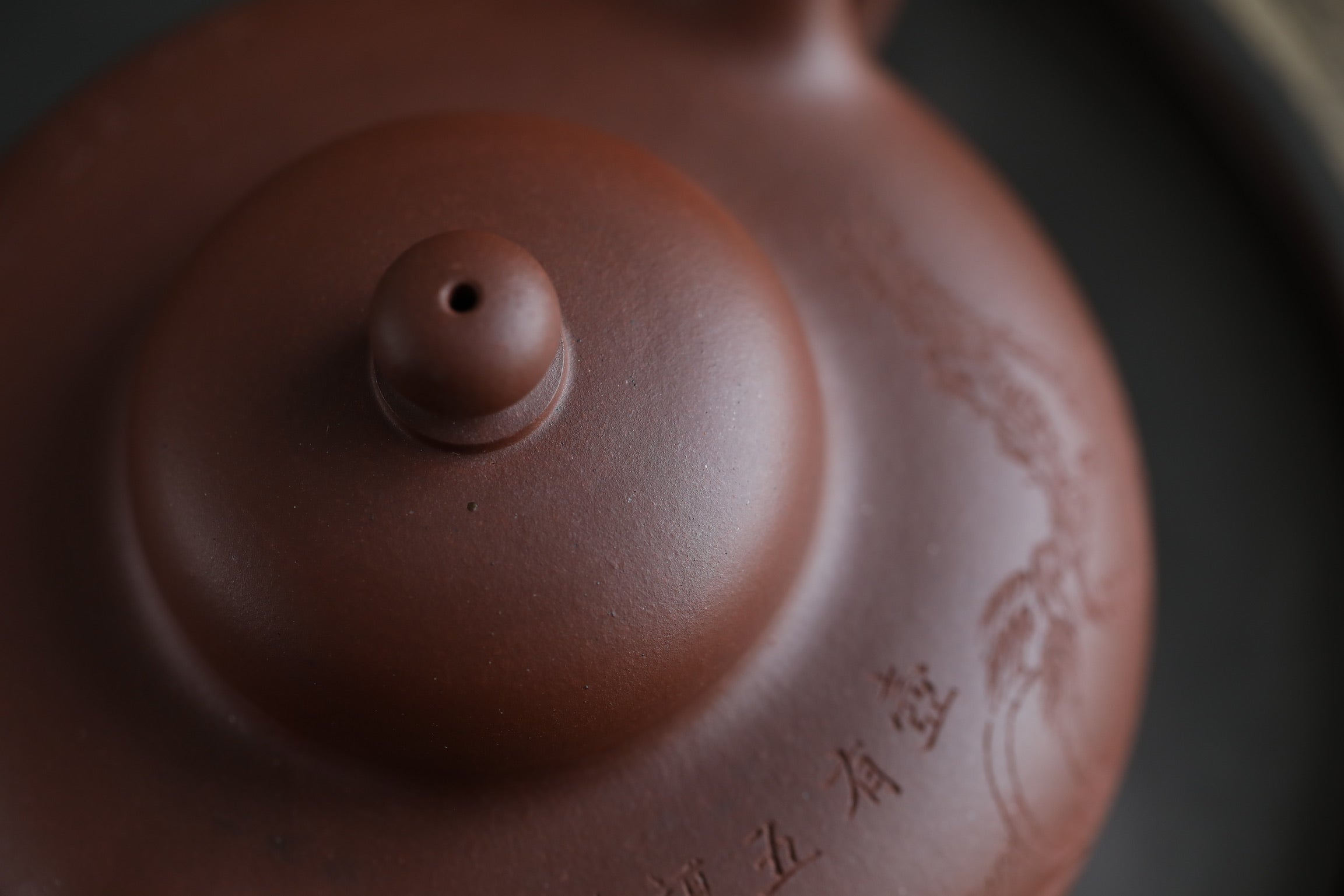Tea brewing, a very simple act, can also be a very sophisticated art. The decision of choosing which tea should be paired with which teapot may seem like an easy task at first, but is actually a deceptively complex undertaking. Tea lovers must be mindful when determining the perfect pair, as this will ultimately affect the outcome of the tea. In this article, we discuss a few vital characteristics in a teapot that affects the taste of the tea…
I. Shape
Square - When it comes to the making of a square zisha teapot, the clay must be well-proportioned as the difficulty and failure rate in this shape is high. Due the internal angle of the square, the tea cannot freely roll within, which can cause blockage in the water flow. But due to its unique shape and striking aesthetic, it must be appreciated more for its beauty rather than its utility. Nevertheless, a square zisha teapot is known to pair well with ripe pu’er.
Flat - The sintering success rate of flat teapots is relatively low, and its shape portrays a sense of stability and strength. Due to its wide foundation, flat-shaped teapots allow for larger tea leaves to calmly release their fragrance within. The water flow is naturally buffered due to its short walls, and its small interior enables the leaves to soak in the water without attenuating too much heat. As such, flat teapots are best paired with roasted teas and/or twisted, long tea leaves like Wuyi tea or green tea (e.g., a flat Duanni teapot is suitable for roasted Wuyi oolongs and has the ability to conceal the taste of ash and fire, thus highlighting the tea’s true flavor and charm).
Round - The round walls of a round teapot allows the flow of water to be smooth and efficient when turned, allowing the water and tea leaves to mix gently and evenly inside. The nature of round teapots and fluidity of its shape makes it a perfect choice for oolongs—particularly ball-rolled oolongs—as it will allow the tea leaves to fully unfurl inside and extract all of its flavors and aromas.
Old Zini - Recommended for oolongs (light roast), pu’er (raw/ripe), red, aged white tea and more. 
Tian Qing Ni - Recommended for oolongs (light roast), pu’er (raw/ripe), and more
Di Cao Qing - Recommended for ripe pu’er, aged raw pu’er, oolongs (light roast), red, green, yellow tea, and more due to its versatility.
Qing Shui Ni - Recommended for pu’er (raw/ripe), oolongs (light roast), red, green, yellow, aged white tea, and more.
Hong Pi Long - Recommended for pu’er (raw/ripe), oolongs (light roast), red, yellow tea and more.
Lvni (i.e., Ben Shan Lv, Mo Lv, Min Guo Lv) - Recommended for oolongs, pu’er (raw/ripe), white, red, green, yellow tea and more.

Duanni - Recommended for Ripe pu’er, aged Raw Pu’er, oolongs (medium/dark roast), red, green, and more. 
Hong Ni (i.e., Xiao Hong Ni, Da Hong Pao, Zhuni) - Recommended for oolongs, young raw pu’er, white, yellow tea and more.
Jiang Po Ni - Recommended for oolongs (roasted) , pu’er (raw/ripe), red and more.
Outside of a teapot’s shape and its physical factors, it is important to note that teapots made of the same type of clay will affect the tea differently, as clays naturally deviate from one another due to the difference in mining, processing, aging, and firing methods.
Wall-thickness – The heat dissipation and retention rate of tea will depend on the pot’s wall thickness, making thick-walled pots suitable for pu’er and red tea. Thin-walled pots are known to dissipate heat fast and will cool down faster than thick-walled pots, which will make it suitable for green tea and green oolongs (e.g., tie guan yin), etc.
Lid size – Teapots with wider lids have better heat dissipation, therefore making it perfect for teas that require less heat retention, such as green tea and green oolongs, etc.
Tall/flat – Tall teapots allow for more space for rolled or pressed leaves to open, therefore, it is best paired with pu’er and red tea. On the other hand, flat teapots’ short walls and smaller interiors will allow the tea leaves to soak thoroughly in the water without retaining too much heat, so they are best paired with green teas and green oolongs.
Tall
Flat
Crystallinity – This factor is affected by the teapot’s firing, whether it was over, high, low, or under fired. Lighter/greener/aromatic teas are best paired with high-fired (not over-fired) teapots, whereas darker/aged/richer teas brew well in normal-fired teapots.
Mesh (during clay production) – Higher-meshed clays will produce smoother/finer teapots with less porosity, thus making it ideal for lighter/greener/aromatic teas. Lower-meshed clays will produce textured/rougher teapots with more porosity, making it appropriate for darker/aged/richer teas.
30 Mesh Zhuni
60 Mesh Di Cao Qing
In addition to all the factors outlined above, there are many more features that can certainly affect the taste of the tea: new vs old teapot, teapot size, amount of tea, quality of tea, water quality, water temperature, pour method/style, pour time, etc. All of these factors have to be taken to account in order to perfectly control and achieve an optimal brew. Indeed, it is no wonder that tea drinking in the modern era has transformed from a simple pass time, to an incredibly complex science! At some point, we realize that there are just too many factors to consider, and ultimately your “perfect” tea may not be “perfect” for others.
















